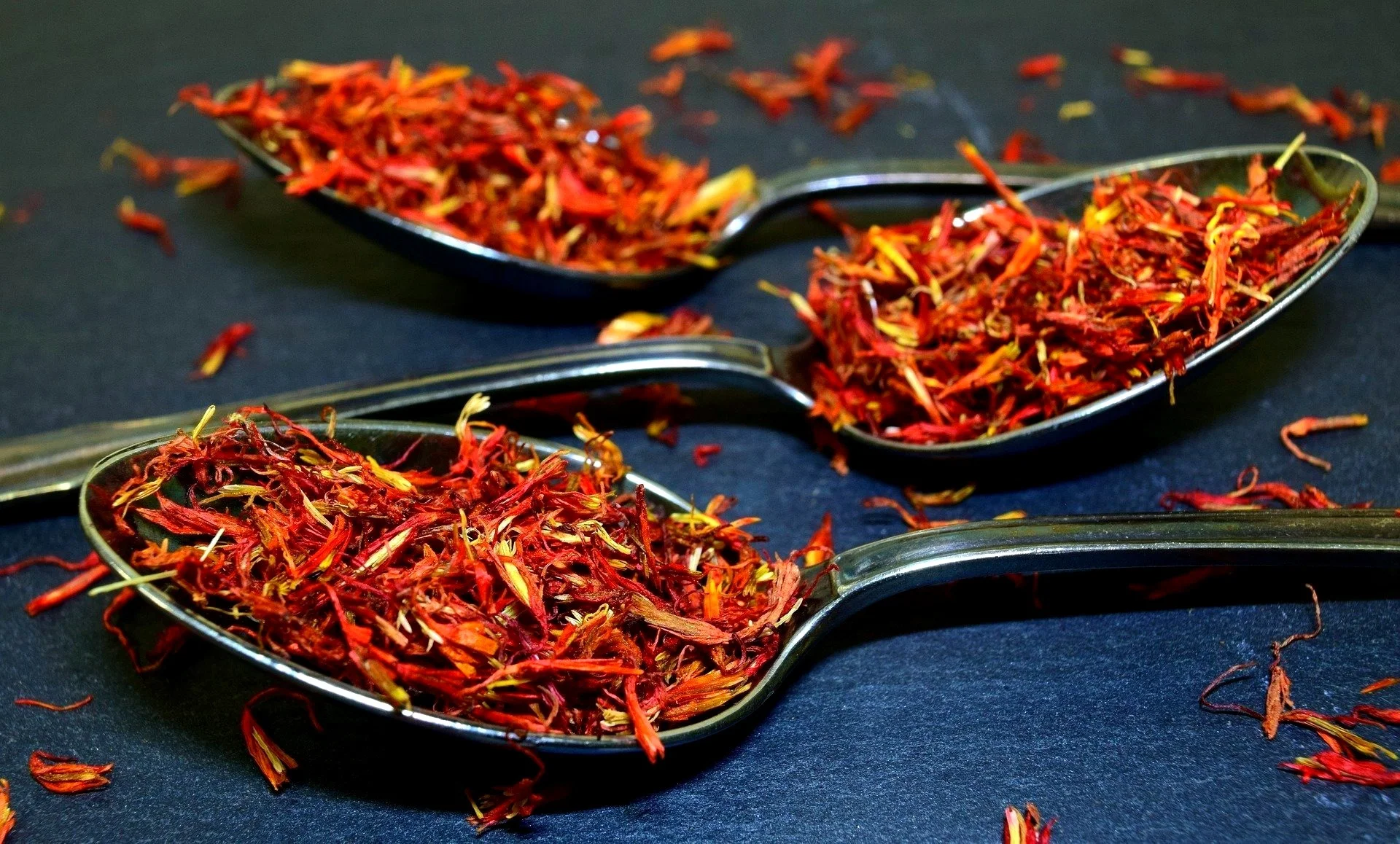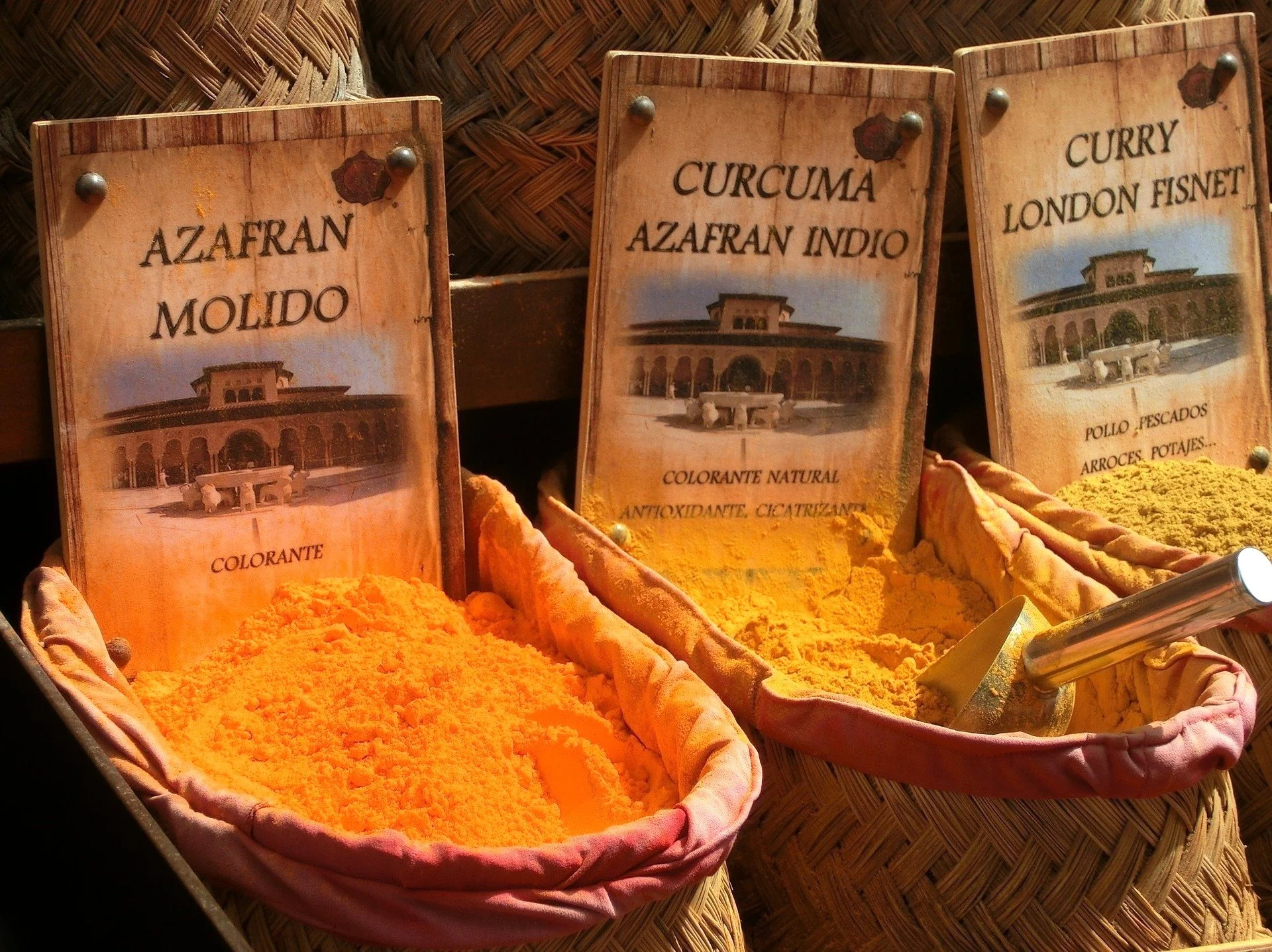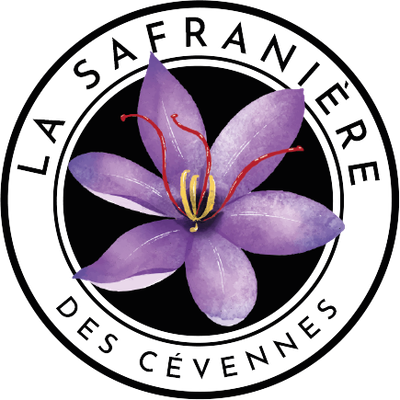HOW TO WELL CHOOSE AND USE YOUR SAFFRON
BEWARE OF FRAUD
Saffron has always had its fraudsters! With prices reaching up to 40,000 euros per kilo, it's not surprising to see a few crooks trying to falsify it. And don't be fooled, there are plenty of counterfeit products to be had.
In this sector, every technique has been used:
- dyeing other flowers to resemble it,
- swelling them with water or syrup to increase their weight,
- extract the dye with alcohol and sell the exhausted stigmas...
- in powder form, it is replaced by turmeric and even brick.
All kinds of subterfuges have been used to cut it or imitate it, but without ever succeeding in matching it!
CHOOSING THE RIGHT SAFFRON
To avoid scams or buying poor-quality saffron, here are our recommendations.
Buy your saffron :
Directly from a local producer (no intermediaries) |
In pistils form (not powder) |
Bright red (dry) and yellow (once infused) |
The year of harvest or the following year |
Cheap saffron does not exist! |
LOCAL PRODUCER: We advise you to buy your saffron from a local producer, at a local market or fair, directly on the farm or on his website, checking the place of production beforehand. By avoiding intermediaries, you can have an exchange with the producer, make sure he knows his product well and ask him questions about his growing methods. What's more, most producers make available to their customers the results of laboratory analysis of their saffron, revealing the levels of :
- safranal: responsible for the fragrance
- crocine: responsible for coloring power
- picrocrocine: responsible for taste
- moisture: indicating drying quality
Top-quality saffrons are classified in category 1. La Safraniere des Cevennes achieved this classification in its first year of operation, with an excellent rate of 100 for picrocrocine (a minimum of 70 is required for category 1).
IN PISTIL FORM: Saffron is commercially available as dried pistils or powder. Pistils are preferable. Powdered saffron is often mixed with curcuma or carthame, also known as false saffron. Powdered saffron does not keep well, loses its flavor and properties, and is very often of poor quality. Saffron stigmas should be dark red, 2-3 cm long, thin and flared at the tip (trumpet-shaped).
COLOR RED: Saffron pistils should be bright red and only red. Only the part where the 3 stigmas meet is yellow. Some growers prefer to remove this part completely, leaving the 3 stigmas separate from each other. At La Safraniere des Cevennes, we have chosen to keep the 3 saffron stigmas still joined together. This characteristic saffron shape is almost impossible to imitate, which is why we've chosen it.
COLORS IN YELLOW: Conversely, saffron, when infused in water or cream, colors liquids and dishes yellow, and only yellow. In fact, a good saffron is very rich in coloring molecules: if you put it between 2 wet fingers, it will turn them yellow.
MILLAGE AND STORAGE: The year saffron is harvested must be indicated on the packaging. Choose a young saffron, harvested within the year or the year before. Kept in a glass pot with a cork stopper, away from light and humidity, it will retain its full aroma for 3 to 4 years. Saffron that is too old will have a pungent taste and will have lost some of its properties.
PRICE: Any saffron sold at a low price is suspect!

This is not saffron !!!
The pistils of safflower (carthame) are used as a dye or bland substitute for saffron (most often to sell to tourists with little knowledge of saffron).

This is not saffron!
Even ground saffron is not yellow but red!
HOW TO USE SAFFRON
Saffron is a delicate spice often overlooked in occidental country. That's why we need a few tips on how to use it properly!
INFUSE
The secret to releasing saffron's full aroma is infusion. The ideal is to infuse saffron in advance, if possible the day before, if not a few hours before starting your recipe. Any liquid can be used for this infusion:
- water
- broth (vegetable, poultry, beef)
- fresh cream
- vegetable cream (almond, soy, hazelnut, oat, etc.)
- fruit juices, including lemon
- vinegar
- eggs (especially whites)
A very small amount of liquid is enough (5cl). You can then add this highly concentrated infusion to the rest of your preparation 5 to 10 minutes before the end of your dish's cooking time. Saffron does not tolerate overcooking (boiling, frying).
DOSAGE
Evaluating the amount of saffron needed for a dish is a delicate matter. Too little and you'll be disappointed, while overdosing can bring a bitter taste.
Here are a few basic rules:
1 pistil = 3 stigmas
1g saffron = approx. 200 pistils = approx. 600 stigmas
0.1g saffron = approx. 20 pistils = approx. 60 stigmas
With 15 pistils (i.e. 45 stigmas), you can prepare :
- 2 liters of milk for a dessert
- 40cl cream for a sauce
- 100g butter for a sauce
- 750g pasta or rice
Tip:
Infuse 1g saffron in 10 tablespoons of hot water. This mixture can be kept 10 days in the fridge. Whenever you need it, you can take 1 tablespoon of this infusion and add it to your dishes, which corresponds to a dose of 0.1g of saffron.
